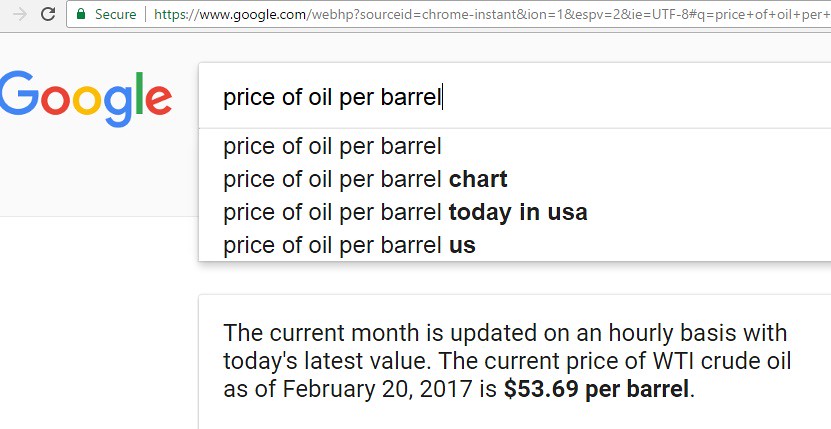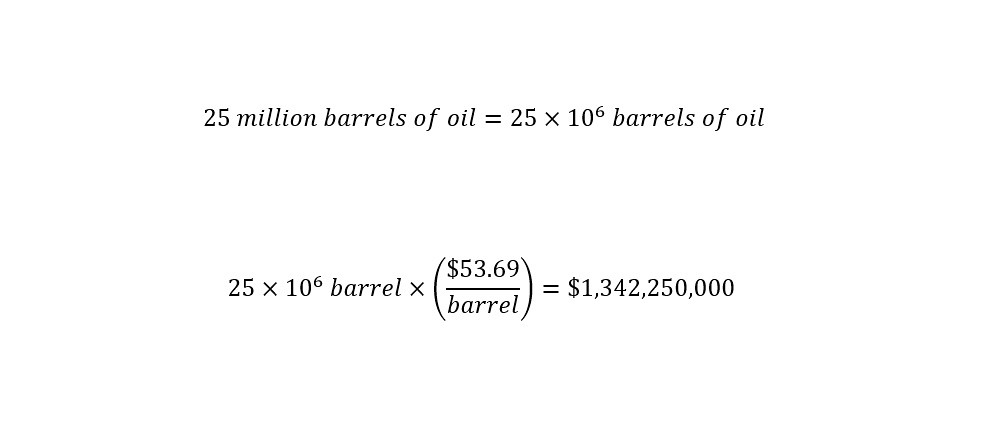Recently, the Department of Energy announced plans to sell oil in order to fund science research. As a scientist, the thought sounds great upon first read -- any additional money diverted toward elevating science research is needed. After thinking about the implications, the thought sounds alright, but rather flawed with the recent trend in spending on renewable energy. In the following paragraphs, I show the additional money being spent in comparison to the current budget for the science program discussed in the news announcement. Further, the money is needed, but the money should come from other sources too -- more money.
Oil For Research Money?
Yes, you read the paragraphs above correctly. The Department of Energy recently announced the following regarding selling oil to fund scientific research:
The Department of Energy’s (DOE) Office of Fossil Energy announced today that DOE will commence a sale of crude oil from the Strategic Petroleum Reserve (SPR) in late February, 2017.Under Section 5010 of the 21st Century Cures Act (Public Law 114-255), signed on December 13, 2016, the Secretary of Energy is directed to drawdown and sell 25 million barrels of SPR crude oil over three consecutive years, commencing with 10 million barrels this fiscal year. The entire 10 million barrels will be sour crude drawn from three sites—Bryan Mound and Big Hill in Texas, and West Hackberry in Louisiana. Revenues from the sale will be deposited in the general fund of the U.S. Treasury to carry out the National Institutes of Health innovation projects as designated in the 21st Century Cures Act.
The timing of the bill means that the Obama administration was interested in paying for Vice President Biden's "Moonshot" Cancer cures by using oil money to fund the "Century Cures Act". After reading this, I could not help but wonder exactly how much money does that 25 million barrels of oil translate into for research at the National Institutes of Health.
How does one go about determining the amount of money that will be devoted toward science from the Sale?
First, the price of oil per needs to be known. If I type into G The answer is an image below: Price of oil per barrel? The following image appears:
The image above indicates that the price per barrel of oil as of February 20,2017 is $53.69 !! In order to determine the total profit from selling off 25 million barrels of oil, a calculation is in order as shown below:
The result indicates that if 25 million barrels of oil were sold over the next 3 years, a total profit of $1.3 billion dollars would be made and devoted to science.
How much help toward science would that dollar amount be?
In the next section, the answer is reported relative to the total budget of the NIH.
National Institutes of Health Budget
According to the website supported by the National Institutes for Health, the following budget and distribution are reported for the year 2016: $32.3 billion dollars. If the total dollar amount (just over a billion dollars) is divided by the NIH annual budget, the percentage increase will be the result as shown below:
If 25 million barrels of oil were to be sold over the next three years, the budget would receive a 4.15% increase. The NIH is part of the Department of Health and Human Services. Below is a pie chart of the fiscal year budget for 2017 of the Department of Health and Human Services:
The pie chart above shows the breakdown of the budget for the Department of Health and Human Services (HHS). The total NIH budget fits within the 8% area titled "Discretionary Spending". What fascinates and concerns me at the same time is that the total NIH budget ($32.5 billion) represents just 2.8% of the total budget for the Department of Health and Human Services. Yet, on the website for the Department of Health and Human Services under "NIH Budget Overview" the following mission is stated for the NIH:
The mission of the National Institutes of Health is to seek fundamental knowledge about the nature and behavior of living systems and the application of that knowledge to enhance health, lengthen life, and reduce illness and disability.
After reading the above statement listed on the website and comparing the mission of the NIH to the dedicated dollar amount awarded in the budget the following must be true of US Medicine:
The United States has a medical system that is "reactionary" rather than "proactive" in treating medical illnesses!!
The reason why I can safely state the obvious is by reading the numbers. Clearly, the US is spending 86% of the HHS budget of $1,145,000,000,000 which is $984.7 billion dollars on maintaining and treating incurred illnesses, there is a problem.
Imagine if the amount awarded to the NIH was doubled, how would the percentages in the pie chart change for Medicare and Medicaid?
Conclusion...
While I support 100% a 4.15% increase over 3 years to the NIH budget, a lot more money could be devoted to the investigation of illnesses and treatments. I cannot help but wonder the following:
Why are we a 'reactive' society?
Why not a 'proactive' society?
The government should be investing a tremendous amount of money into medical research in order to get results. Clearly, the government is not spending money in a prioritized way.
If anything, why is the money from oil not going to the Department of Energy to develop more sustainable energy generation?
The questions are difficult ones to entertain for the public (us). In a recent post, I discussed the reducing the amount of transparency in Federal Agencies. The amount of money spent on science research is small compared to the amount of money spent on taking care of diseases which treatments could be found. Research needs to go forward. Raising the NIH budget by $536 million by selling off oil is questionable and not worth bragging about. Scientists are happy to see the increase. The energy industry loses $536 million by the shift in money.
Until next time, have a great day!




No comments:
Post a Comment